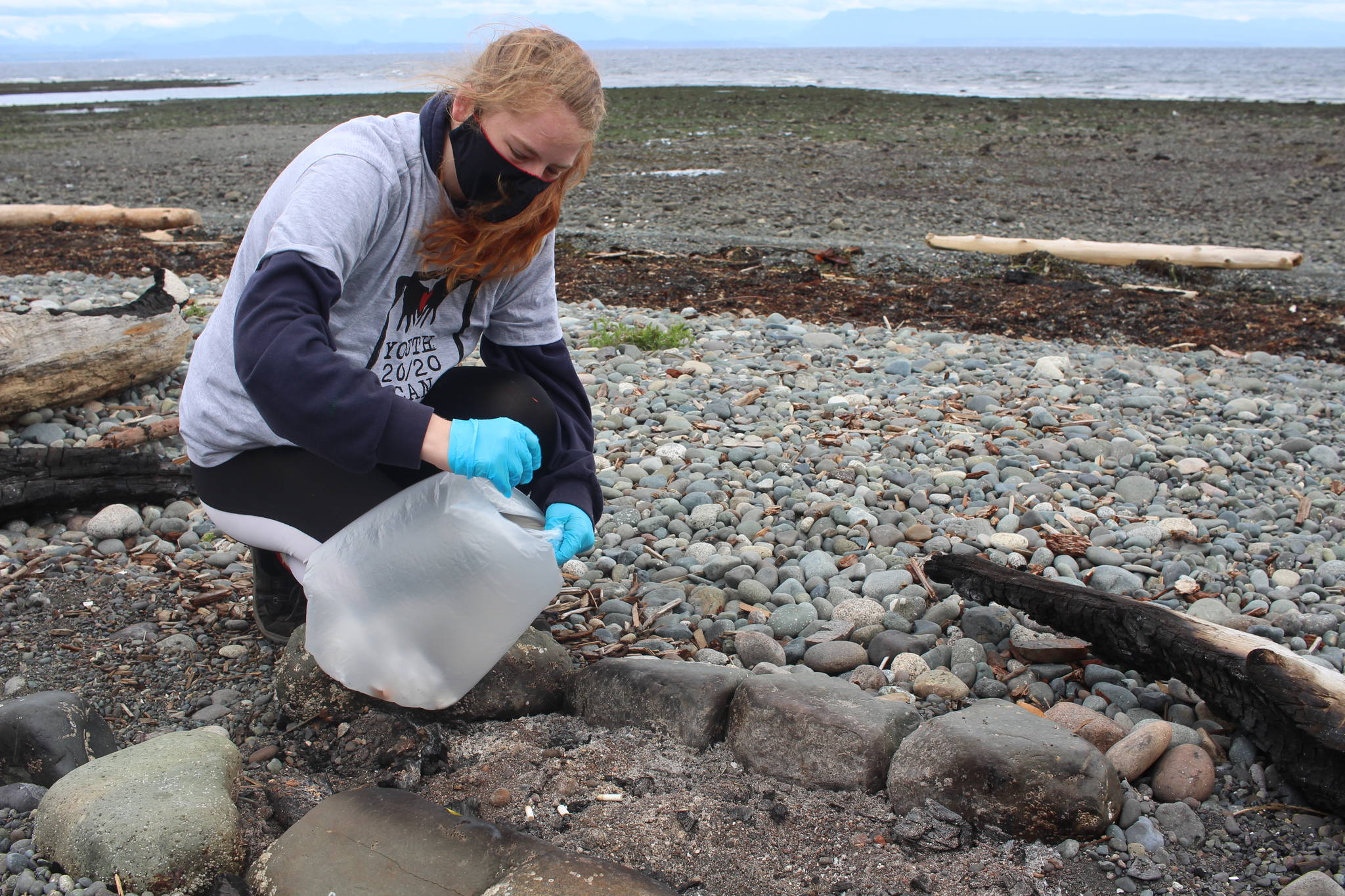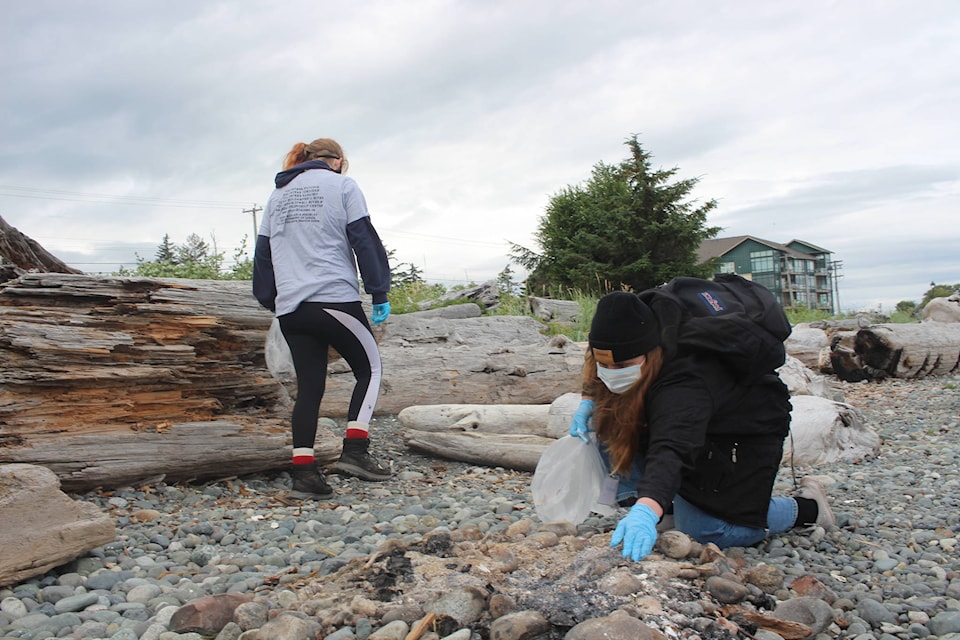Second in a series
Even in the darkest moments of the pandemic, Campbell River’s social service workers stepped up to help take care of the most vulnerable members of our community.
Throughout the sector, workers were galvanized by the crisis and came together in unprecedented ways to provide for the community. They came to work even though the world outside was falling apart, they came even though they experienced the same anxieties as everyone else watching the systems that were once thought to be unbreakable start to crumble and fall. They came because there are people in this community who are disproportionately affected by the crisis, and because nobody should be left behind.
“People who work in the sector just continue to show up and do their best. They come to work every day to serve the people that we serve,” said Sue Moen, Supportive Housing Services Manager for the Salvation Army. “I think they should all be classified as community heroes because every day they face more people in harder circumstances in more challenging circumstances and they also have to deal with the general societal anxiety and changes in their own personal lives.”
A true sense of community has emerged during the pandemic. It isn’t just the volunteer and frontline workers in the social services sector that are putting in work, but the people on the other side of things as well. Moen said that the clients of the shelter have also been stepping up to ensure things are safe and as easy as possible for all involved.
“We’ve seen a heightened level of general anxiety in the populations we serve, which is exacerbated by asking them to live in a communal setting and then you’re working with multiple people, including your staff, to change behaviours, change procedures and then maintain those changes until the next thing comes,” she said.
“The clients show an amazing amount of courage, flexibility and adaptation. Like anyone else, when they’re asked to change their behaviour for a legitimate reason: to keep themselves, each other and the staff safe, they do it,” Moen added. “We’ve seen an increase in participation in the operation of the shelter. With work, cleaning and people doing their own laundry. They’re also looking for ways to give back.”
Volunteer Campbell River, a non profit that helps coordinate volunteers for different organizations and events around the city, has had to pivot its entire operation to keep providing services. Special event volunteering is currently not possible due to lack of events, and other face-to-face services.
“As the pandemic started to take hold, our entire organization changed it’s purpose. We’re now supporting specific organizations that needed frontline volunteers,” said Mary Catherine Williams, Volunteer Campbell River’s executive director.
“The volunteer centre in the past has been very focused on organized volunteering, so volunteers that belong to organizations. But the pandemic has really risen the profile of more casual or unorganized volunteering,” she continued.
That refers to the more grassroots side of volunteering, the kind that is not as reliant on funding, boards of directors or any kind of structure, just people helping others. Williams said that her organization noticed the trend and offered to help out.
“Right off the bat, we said that we should look at it because it’s an important part of what needs to happen right now,” she said. “We sort of took away some of those barriers that used to be in place, and we’re saying that anyone who’s helping other people, we want to help you. We want to be supportive of that…the pandemic has forced us to think outside the box as a volunteer organization and centre and look at the roles our community can play to help us be stronger and work better.”
Working directly with people in the community has also been a challenge, but organizations are adapting to the new way of doing things. Social services tend to work with people who do not necessarily have the resources to operate virtually, and Jim Brennan of the Immigrant Welcome Centre said that his organization has had to look at a mixed model to continue to help clients.
“A lot of these people are not geared for life online,” Brennan said. With “second language stuff and technological literacy, it’s a whole other language. We’re busy and proactively getting together courses and teachings for them to engage in the virtual world.”
While the physical health of the newcomer community is a concern for Brennan and his team, the real hurdle is the mental strain that the pandemic has had on people who have immigrated to Canada. Not being able to communicate with family members adds yet another layer of mental stress to a group that has been adapting to a completely different culture than what they’re used to.
“Some of these people have come over by themselves, they haven’t even come with families,” he said. “They have no ability or technological literacy to connect with home.”
While Brennan is proud of his staff for their hard work, he is aware of the difficulties that working during a pandemic can bring. People working during the pandemic are facing the same strains as everyone else, and those working to provide valuable services to vulnerable people have to take the time to rest and recuperate.
“I think we’re all feeling tired. We’re feeling burnt out and not just from work, but from life generally speaking. They’re feeling it. It’s time for some sort of a break,” he said. “Taking a moment to pause is important, to recognize how each of us as individuals are struggling, but we’re all doing OK.”
The challenges presented by the pandemic have not stopped the important work from happening. It has actually had the opposite effect, Moen, Williams and Brennan have all noticed more collaboration between agencies to make sure the most vulnerable members of the community get the help they need.
“I’ve seen more people step up, open their doors and be more collaborative. Sometimes pandemics can be wonderful things. You can’t be insular anymore,” Brennan said. “It forces people to look outside their organization and instead of looking inward with fear, they’re looking outward for help and to provide help.”
Though the future for the sector is uncertain — funding for social services groups is nebulous — those working in the sector are confident that after the COVID-19 pandemic is in the rearview there will still be a place for those who just want to help.
“These small communities, they’re more than just a community by definition, they’re a community by what they do,” Brennan said. “What will be will be. Our communities are fairly resilient, but there’s no how-to book.”

